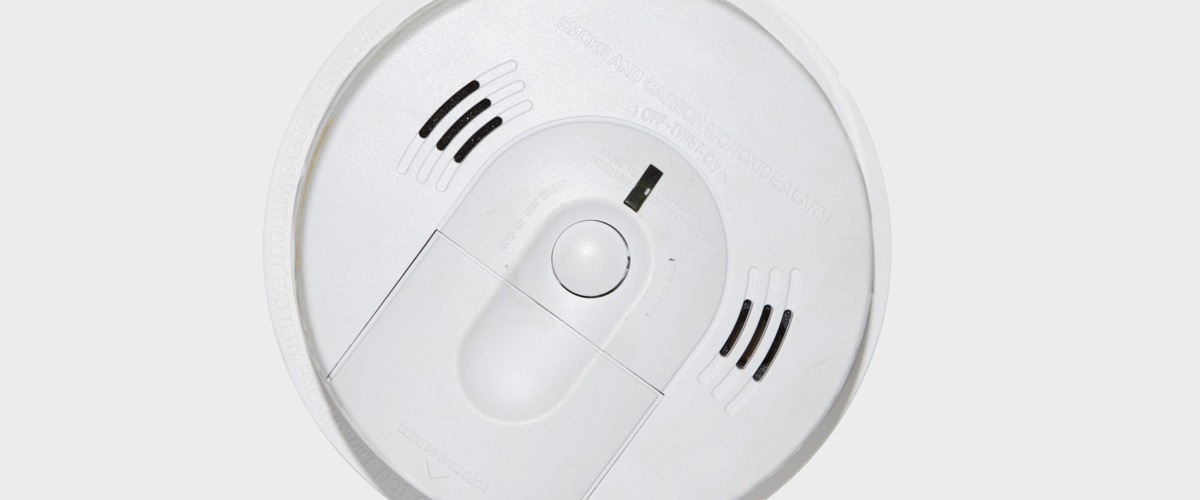
Top-Rated Carbon Monoxide Detectors: Keep Your Family Safe
Carbon monoxide (CO) is an invisible, odorless gas that can pose serious health risks if undetected. Having a reliable carbon monoxide detector in your home is essential for protecting your family from the dangers of CO exposure. With a wide range of options available, from basic battery-powered units to advanced models with digital displays and dual functionality, choosing the right CO detector can be overwhelming. In this article, we review some of the top carbon monoxide detectors on the market, highlighting their features and helping you find the best option to keep your home safe.
Top Carbon Monoxide Detectors Comparison Chart
| Brand/Model | Power Source | Style | Dimensions | Weight | Special Features |
|---|---|---|---|---|---|
| First Alert CO605 Plug-In Carbon Monoxide Detector | Corded Electric | Plug in Alarm with Battery Backup | 1.38″D x 5″W x 3.4″H | 0.26 Pounds | 85dB alarm, Test/Silence button |
| Kidde Carbon Monoxide Detector, Battery Powered CO Alarm | Battery Powered | Detector Alarm | 1.5″D x 4.5″W x 2.75″H | 0.5 Pounds | Portable, 85dB alarm, LED indicators |
| Kidde Carbon Monoxide Detector Plug In Wall with AA Battery Backup | Plug In | 1 Pack | 1.5″D x 2.75″W x 4.05″H | 0.04 Pounds | Peak Level Memory, 85dB alarm, Test-Hush button |
| X-Sense Carbon Monoxide Detector | Battery Powered | Digital | 0.6″D x 5.3″W x 2.5″H | 0.2 Pounds | LCD display, real-time CO levels, portable |
| JNHCD Combination Carbon Monoxide and Smoke Alarm | Battery Powered | 2 in 1 Smoke and Carbon Monoxide Alarm with High Sensitivity | 4.96″D x 1.93″W x 4.65″H | 0.23 Pounds | Dual detection, digital display |
| KH Alert Carbon Monoxide Detectors | AC | Modern | 4.69″D x 2.05″W x 0.96″H | 0.22 Pounds | CO, temperature & humidity monitoring, voice & light alerts |
| JYSONGHU Carbon Monoxide Detector | Battery Powered | Modern | 3.94″D x 3.94″W x 1.57″H | 0.2 Pounds | LCD display, 85dB alarm, portable |
| Lunarlipes Portable Carbon Monoxide Detectors | Rechargeable Lithium Battery | Portable 3-in-1 PTH-10D (With Magnetic) | 1.18″D x 2.75″W x 2.99″H | 0.35 Pounds | 3-in-1 monitor (CO, temperature, humidity), 120-hour standby |
| TJTFJS 2 in 1 CO & Smoke Detectors | Battery Powered | Modern | 4.94″D x 4.64″W x 1.81″H | 0.4 Pounds | Dual detection, LCD display |
First Alert CO605 Plug-In Carbon Monoxide Detector (Best Seller)

- Reliable Safety with Battery Backup: This plug-in carbon monoxide detector ensures continuous protection with its battery backup, keeping your family safe even during power outages.
- Advanced Electrochemical Sensor: Equipped with an advanced electrochemical sensor, this detector accurately monitors CO levels, regardless of where it’s placed in the room, providing reliable detection throughout your home.
- User-Friendly Design with Loud Alarm: The CO605 features a simple test/silence button for easy operation and a loud 85-decibel alarm that alerts you immediately when dangerous CO levels are detected, ensuring prompt action.
Kidde Carbon Monoxide Detector, Battery Powered CO Alarm

- Portable and Easy Installation: This battery-powered carbon monoxide detector requires no wiring, making it easy to install on a wall or place on a tabletop. Its portable design allows for flexible placement anywhere in your home.
- Reliable Detection with Electrochemical Sensor: The detector features advanced electrochemical sensor technology to accurately detect the presence of carbon monoxide, ensuring your home is protected even during power outages, thanks to the included 2-AA batteries.
- User-Friendly Features: Equipped with an 85-decibel alarm, a green LED for power indication, and a red LED to signal the presence of CO, this detector ensures clear communication.
Kidde Carbon Monoxide Detector Plug In Wall with AA Battery Backup

- Simple Plug-In Installation: This carbon monoxide detector is easy to install by simply plugging it into any standard 120V outlet, providing immediate protection without the need for complex wiring.
- Reliable Protection with Battery Backup: The included 2-AA battery backup ensures continuous monitoring during power outages, so your home remains protected even when the electricity is out.
- User-Friendly Features: The detector features an 85-decibel alarm to alert you when carbon monoxide is detected, along with a Test-Hush button for easy testing and silencing of false alarms. The Peak Level Memory records the last CO detection or test, and the end-of-life chirp notifies you when it’s time to replace it.
X-Sense Carbon Monoxide Detector

- Flexible Installation: This CO detector can be easily wall-mounted or used as a free-standing unit, offering versatile placement options. Its portable design also makes it convenient to take with you while traveling.
- High Accuracy and Reliability: Equipped with an advanced Figaro electrochemical CO sensor, this detector ensures precise and reliable detection. It comes with a 5-year replaceable battery, providing long-term protection and peace of mind.
- Informative Alerts and Display: The detector features a loud 85-decibel alarm for instant alerts, while the LCD screen displays real-time CO levels and remembers peak values. The intuitive 3-colored LED indicator provides clear visual signals for alarm, power, and fault status.
JNHCD Combination Carbon Monoxide and Smoke Alarm

- Dual Detection for Enhanced Safety: This device combines both photoelectric smoke and carbon monoxide detection in one unit, providing comprehensive protection against two major household hazards.
- Informative Digital Display: The built-in digital display shows real-time levels of smoke and carbon monoxide, allowing you to monitor your home’s air quality at a glance.
- Easy Installation and Maintenance: Battery-operated for convenience, this alarm can be easily installed without needing to connect to an electrical source. The “Test” button allows you to quickly verify that the unit is functioning properly, and the green LED indicator confirms normal operation.
KH Alert Carbon Monoxide Detectors

- Advanced Monitoring Features: This upgraded carbon monoxide detector not only monitors CO levels (0 to 999 PPM) but also tracks temperature (1 to 176 ℉) and humidity (0% to 95% RH), providing comprehensive air quality protection for your home.
- Easy to Use with High Accuracy: The plug-and-play design makes installation quick and hassle-free. Equipped with an imported electrochemical sensor, the detector offers high reliability and responsiveness, triggering both voice and light alarms when CO levels exceed 150 PPM.
- Compact and Portable with Clear Display: This small, lightweight CO detector is easy to carry and can be used in various settings like homes, hotels, and RVs.
JYSONGHU Carbon Monoxide Detector

- Reliable and Portable Protection: This carbon monoxide detector offers continuous monitoring of CO levels, powered by 3 AA batteries (not included), ensuring it works even during power outages. Its portable design allows for easy installation anywhere in your home without the need for a socket.
- Fast and Accurate Detection: Equipped with an advanced electrochemical CO sensor, this detector provides quick and precise alerts when dangerous levels of carbon monoxide are detected. The loud 85-decibel alarm and flashing red LED ensure you’re promptly warned in case of an emergency.
- User-Friendly Design: The detector features an easy-to-read LCD digital display and simple test/reset button, making it convenient to use. It can be mounted on walls or ceilings with the included screws and anchors.
Lunarlipes Portable Carbon Monoxide Detectors

- High-Precision 3-in-1 Monitoring: This portable detector offers real-time monitoring of carbon monoxide levels, temperature, and humidity, all displayed accurately on the device. Equipped with a high-precision sensor with a 10-year lifespan, it can detect CO concentrations ranging from 0 to 500 PPM, ensuring you’re always aware of your environment’s air quality.
- Customizable Alerts and Visual Indicators: The detector features three light indicators—green for safe, yellow for warning, and red for danger—based on CO concentration levels. The alarm is customizable, allowing you to set your desired CO threshold.
- Portable Design with Long Battery Life: With a built-in 1000mAh Li-ion battery, this CO detector offers up to 120 hours of standby time after a fast one-hour charge.
TJTFJS 2 in 1 CO & Smoke Detectors

- Dual Detection for Enhanced Safety: This device combines carbon monoxide and smoke detection in one unit, providing comprehensive protection for your home or office. It’s a versatile security solution that ensures you’re alerted to both fire and carbon monoxide hazards.
- Accurate Sensing with Digital Display: Equipped with advanced technology, this detector accurately senses and alerts you to dangerous levels of carbon monoxide and smoke. The LCD digital display provides clear and precise readings, allowing for quick and effective action when needed.
- Easy Installation and Operation: Designed for user-friendly setup, this detector is easy to install and operate. It features a convenient test button for regular functionality checks, ensuring that the device is always ready to protect your home or office.
How to Choose Carbon Monoxide Detectors?
Choosing the right carbon monoxide (CO) detector is crucial for ensuring the safety of your home and loved ones. Here’s a guide to help you make an informed decision:
1. Types of Carbon Monoxide Detectors
Battery-Operated: These are portable and easy to install anywhere in your home. They work even during power outages, but you need to regularly check and replace the batteries.
Plug-In: These detectors plug directly into an electrical outlet and usually have a battery backup. They are easy to install and provide continuous monitoring, but their placement is limited to areas near outlets.
Hardwired: These are wired directly into your home’s electrical system and often come with battery backup. They require professional installation but offer reliable, continuous operation.
Combination Detectors: These devices combine CO detection with smoke detection, offering dual protection in one unit. They are space-saving and cost-effective, ideal for comprehensive safety.
2. Sensor Type
Electrochemical Sensors: Considered the most reliable, these sensors provide accurate detection of CO levels and are commonly found in modern detectors.
Metal Oxide Semiconductor: These sensors detect CO by changing resistance in a heated tin oxide element. They are less common but effective.
Biomimetic Sensors: These use a gel that changes color when it absorbs CO, triggering an alarm. They are known for their accuracy and reliability.
3. Power Source
Battery-Powered: Offers flexibility in placement and continues to operate during power outages. However, you need to monitor battery life and replace batteries regularly.
Plug-In with Battery Backup: Provides continuous monitoring and backup power during outages. It’s a good option if you want a reliable detector that’s easy to install.
Hardwired with Battery Backup: Offers a permanent solution with continuous monitoring, but requires professional installation.
4. Display and Indicators
Digital Display: A digital display shows real-time CO levels, allowing you to monitor the air quality in your home. This is especially useful for detecting low levels of CO that may not trigger an alarm.
LED Indicators: LED lights indicate the status of the detector—typically green for normal operation, yellow for a fault, and red for an alarm.
Alarm Sound: Ensure the detector has a loud alarm (usually around 85 decibels) that can wake you up in case of a CO emergency.
5. Additional Features
Test/Reset Button: This allows you to regularly test the functionality of the detector and reset the device after an alarm.
End-of-Life Indicator: CO detectors have a limited lifespan (usually 5-10 years). An end-of-life indicator lets you know when it’s time to replace the unit.
Memory or Peak Level Function: Some detectors record the highest level of CO detected, which is useful for identifying intermittent CO leaks.
Voice Alerts: Some models feature voice alerts that indicate whether the alarm is due to CO or another issue like low battery.
6. Installation Location
Bedrooms and Sleeping Areas: Install CO detectors near or inside bedrooms to ensure you hear the alarm while sleeping.
Common Areas: Place detectors in common areas like living rooms, kitchens, and hallways.
Basements and Garages: CO can accumulate in basements and attached garages, so installing detectors in these areas is important.
Avoid Placement Near Appliances: To prevent false alarms, avoid placing detectors directly above or beside fuel-burning appliances.
7. Brand and Certification
Reputable Brands: Choose detectors from well-known brands with a good track record of safety and reliability.
Certification: Ensure the detector is certified by recognized organizations such as UL (Underwriters Laboratories) or CSA (Canadian Standards Association), which test for safety and performance.
Investing in a high-quality carbon monoxide detector is a crucial step in safeguarding your home and loved ones from the silent threat of CO poisoning. Whether you prefer a simple, plug-in model for easy installation or a feature-rich detector with digital readouts and dual protection, there’s a CO detector that fits your needs. By understanding the key features and benefits of each product, you can make an informed decision and ensure your home is equipped with the best protection against carbon monoxide. Stay safe and breathe easy, knowing that you’ve chosen the right detector for your peace of mind.



